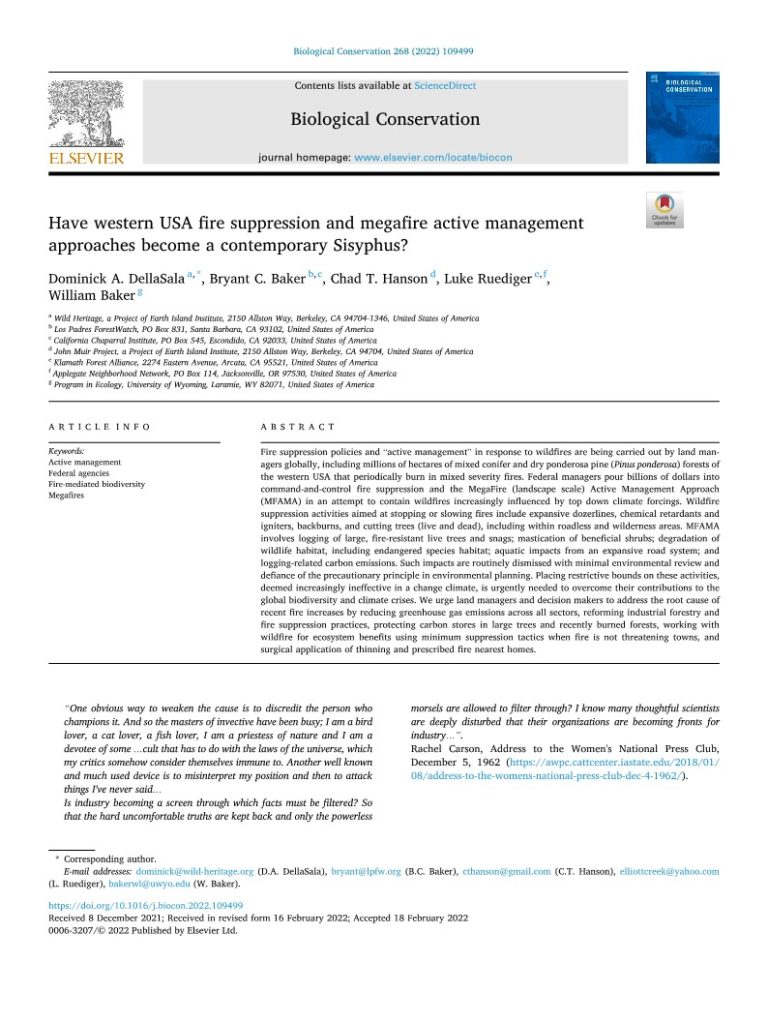Register for March 30 Webinar featuring panel discussion with article co-authors.
ForestWatch’s Conservation Director, Bryant Baker, recently co-authored a peer-reviewed scientific paper about forest and fire management in the western U.S. that is being published in the April issue of the journal, Biological Conservation. The full article is now publicly available online.
The paper, Have western USA fire suppression and megafire active management approaches become a contemporary Sisyphus?, was led by renowned forest and fire ecologist Dr. Dominick DellaSala, Chief Scientist at Wild Heritage, who just today testified about current forest management policies before the House Oversight Subcommittee on the Environment. Other co-authors include Dr. Chad Hanson at John Muir Project, Dr. William Baker at University of Wyoming (no relation to Bryant), and Luke Ruediger at Klamath Forest Alliance.
There is ongoing scientific debate about current forest management and fire suppression practices. This new paper adds to a growing body of evidence that questions the widespread use of intensive commercial thinning and other fuel reduction activities, especially as strategies to protect communities from large weather- and climate-driven wildfires. The authors note in the article:
Treating wildfires using bottom-up fuels reduction approaches when top-down extreme climate factors are increasingly overriding such efforts…could push ecosystems beyond resilience thresholds…at the further expense of biodiversity and the climate.
The article’s title references the Greek myth of Sisyphus, in which a former king is punished with the eternal task of pushing a boulder up a hill. Each time the boulder nears the top, it rolls back down. The authors liken current forest and fire management practices to this futile, “Sisyphean” task:
Doing away with precautionary measures in a climate and biodiversity planetary crisis is irresponsible and we suggest that managers adhere to the principles by upholding the burden of proof standard. To do otherwise, perpetuates the Sisyphean myth of doing more of the same regardless of efficacy problems and substantial consequences. That view only moves us further away from safely and responsibly getting to coexistence with natural forces like wildfires that are instead subjected to command-and-control hubris.
Bryant Baker’s contributions to the paper include GIS analysis and mapping and writing some sections, including the entire supplemental text, which details new issues with current forest fire severity mapping efforts. This work is part of ongoing land management research collaboration between ForestWatch and scientists and analysts at other organizations.
Some of the article’s co-authors will be participating in a panel discussion during a webinar co-hosted by ForestWatch and John Muir Project on March 30 at 11am. You can register for that virtual event for free here.








Comments are closed.